Warning: this post contain pictures of naked women in an art history context. Proceed with caution if you are in a nipple-free zone.
There I was, minding my own business on a Friday afternoon, when a Facebook messenger notification pops up on my phone. The person messaging me was a guy who was not in my friends list and didn’t have any friends in common with me. He said that he had read one of my blog posts, the infamous “Why do you want to look like a man?” text, and asked for permission to “publish” it.
My dyke sense started tingling right away. First of all, the text is already public. What did this individual mean by “publishing”? And also, why the hell would a man be interested in a blog post where I make it clear how much I don’t care about men and their opinions? I thought it was suspicious and decided to check out the man’s Facebook profile.
In the profile picture, it was obvious that he was a middle-aged man in his late 50’s with a subtle beer gut protruding under his leather jacket. He wore a pair of sunglasses and had a well-trimmed white beard while leaning over a muscle car, clearly trying to look tough. The picture was in black-and-white and looked like it was taken with a high quality camera. I copied and pasted the link to my blog post in my reply to him and told the dude he could share it on his social media if he wanted. I expected it to be the end of that interaction.
The dude thanked me and immediately followed up by asking: “Where do you live?”
My dyke sense was tingling again.
I was already kinda freaked out and got a bit hostile, so I told him it was none of his business, though I was very polite about it. The man apologized and explained that he was asking because he wanted to know if I’d like to participate in his art project. He said that he was a photographer and sent me an Instagram link.
I took a deep breath, rolled my eyes and clicked. What I found there was exactly what I expected.
The Instagram album contained dozens of pictures of young women, naked and clean shaven, photographed in feminine poses, with arched spines and parted lips. Some of them, in shy poses, covered their breasts and genitalia with their hands, white sheets, or a seethrough cloth. Others had their nipples edited out, replaced with small black rectangles. Most of them were lying on a bed. All of them were shot in black-and-white, under a soft, diffuse light that emphasized their curves and silhouettes.
“I’m doing this social project”, the Dude explained. “I want to help women feel comfortable with their bodies. I am a feminist.” Attached to each picture there was a long caption written by the model, talking about the difficulty they had with accepting their bodies, their struggle to exist as women in a world that despises them and their process of self-acceptance. They told stories of discrimination and childhood trauma. Many of them were survivors of rape and sexual abuse.
In one of the comments under a picture of a woman crawling over a messy bed, her naked ass taking the focal point of the picture, the Dude explained that any woman can participate in the project, but she would have to go to his studio to be photographed.
Slightly disgusted, but not even a little bit surprised, I made it clear to the man that I had absolutely no desire to have my name or my words associated with his project and, very politely, I also made it clear that I was skeptical about the value a project where a man photographs naked women less than half his age as a feminist action.
The Dude thanked me for my response and ended the conversation.
Or at least that’s what I thought.
Three minutes later the Dude was possessed by an overwhelming urge to mansplain his nude collection to me, and sent me the following message:
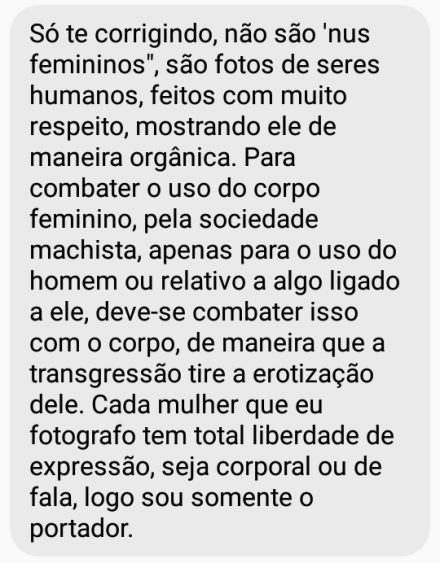
And no, I didn’t translate it poorly. He really sounded that nonsensical.
Of course, it got him a swift trip to my block list.
However, I thought this incident was worth writing about, especially because this situation is very common. So let’s take apart this message, this “art project” and this liberal-brofeminist-liberator-of-women’s-bodies posturing.
Because this is a load of bullshit.
Whether you like it or not, Creepy Dude from Facebook, your work is simply another chapter in a long history of portraits of female nudity made by men. And yes, I’m calling them female nudes. While women are, obviously, human beings, every single one of your pictures shows a female human being. This is not a mere coincidence. Just like it’s not a coincidence that most of those models are very young, some barely out of their teens and almost all of them under 30.
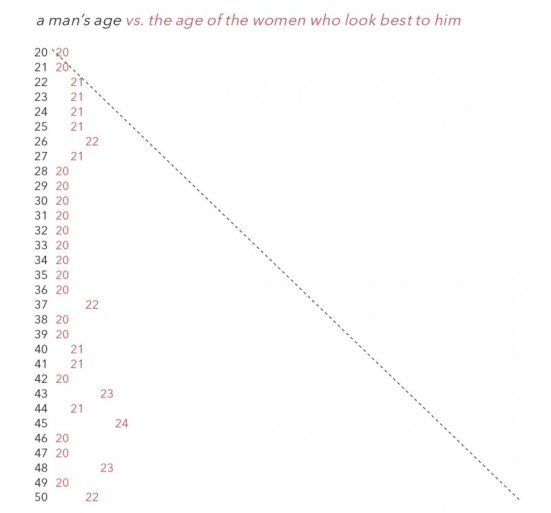
It’s also worth mentioning that most of the women photographed are thin, white, and conventionally attractive. This does not surprise me. By portraying these skinny young white women in feminine, vulnerable poses you are fitting yourself into the millenia-old tradition of using nude images of women to represent the beauty standards of the time, a tradition that dates back to the pre-historic Venus figurines.

The portrait of the human figure has a long and diverse history, including paleolithic idols, classic greek statues, Michelangelo’s nude Adam reaching out to touch his creator, baroque nudes with their defining chiaroscuro lighting schemes, impressionist nudes, expressionist nudes, cubist nudes, surrealist nudes, modernist nudes and contemporary nudes.
While male nudity was historically portrayed as a symbol of strength and virility, seen in images of gods and warriors, showing off martial prowess and power, or even in nude martyrs, representing an ideal of moral righteousness, female nudes were portrayed in a completely different way through history.
The classic image of the female nude in western art is that of the Venus, a name derived from the Roman name of the goddess Aphrodite, a deity associated with love and beauty. In ancient Greek sculpture, up to approximately the 6th century b.C., male images were portrayed nude, while female images were always dressed up. For the ancient Greeks, male nudity was a way to exhibit strength and athleticism, attributes that they believed women did not possess. In the 4th century b.C., the sculptor Praxiteles created what scholars defined as one of the first female nudes, representing the goddess Aphrodite and starting a trend in western art that would last for millenia.

The Venus statues were frequently portrayed covering their breasts and genitals, as if they had been caught by surprise. Some, like the Venus de’ Medici, on the far left side of the image above, are represented next to sea creatures, alluding to the myth of the birth of the goddess, born from the waves caused when the severed penis of the god Uranus was cast to the sea.
The image of the Venus stayed popular during the Roman Empire, when we have the first records of the image of the Reclining Venus, portrayed in a lying position that to this day greatly influences fashion editorials. As opposed to the male nudes, represented in dynamic, aggressive postures, the Venus is portrayed in a passive or even defensive manner, as it is in the instances where the subject covers herself to preserve her modesty. The Venus is essentially a portrayal of femininity, a female image represented through a male gaze, a picture of ethereal, serene beauty, representing the ideal of femininity of the time.
The portrayal of female nudity went through somewhat of a hiatus during the medieval period, showing up sporadically in biblical illustrations where it was relevant. For example, female nudes are seen in images of Eve in the Garden of Eden. During the Renaissance, with renewed interest in classical images, the portrayal of the Venus came back with full force. The female nude, from this point on, was one of the most frequent themes in western art.
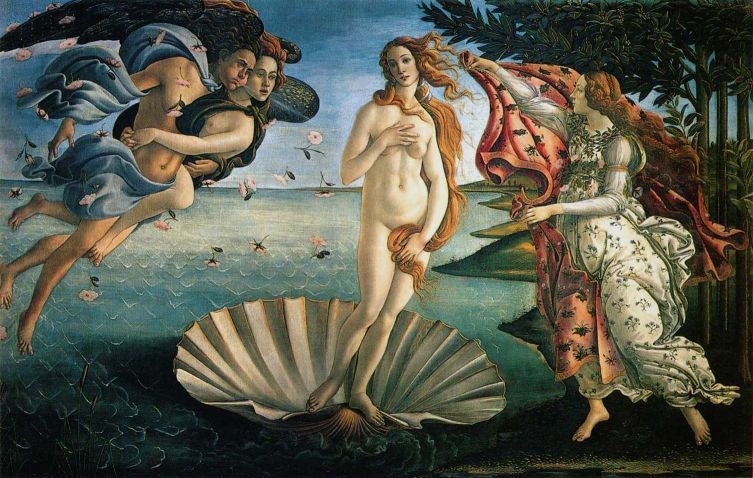
In the beginning of the 16th century there was a break in tradition in the representation of the female nude. While classical references were still there, images of nude women with no connection to mythology or sacred texts started to show up. Women who were not goddesses or allegorical images; such as Giorgione’s “Sleeping Venus”, which is considered one of the first works of this new trend.
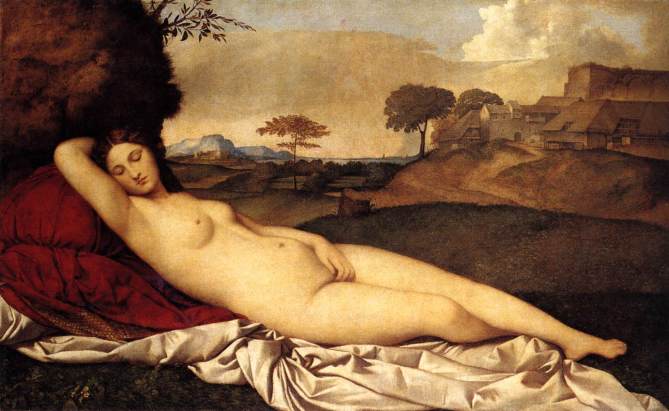
The left hand placed over the vulva gives the image a slight suggestion of eroticism, and the curves of the woman harmonize with the curves in the background hills. Like a sight painting, the image of the female nude is represented as an object to be contemplated and appreciated, made by men and for men’s consumption. Traditional European oil painting makes this voyeuristic intention very clear in it’s hundreds of instances where the woman represented in the picture looks like she is aware of being observed. Be it in a shy or provocative manner, the female nude often has her gaze directed outside the picture. She is not really inserted in that scene, she’s not present in her own context or in her own story. In other words, she is not in the middle of an activity, she is completely passive – at times even asleep -, an object made to be observed and consumed.
Art critic and scholar John Berger defines this dynamic very well in his BBC series “Ways of Seeing”:
“…But in them all there remains the implication that the subject (a woman) is aware of being seen by a spectator. Often – as with the favourite subject of Susannah and the Elders – this is the actual theme of the picture. We join the Elders to spy on Susannah taking her bath. She looks back at us looking at her. In another version of the subjeet by Tintoretto, Susannah is looking at herself in a mirror. Thus she joins the spectators of herself. The mirror was often used as a symbol of the vanity of woman. The moralizing, however, was mostly hypocritical. You painted a naked woman because you enjoyed looking at her, you put a mirror in her hand and you called the painting Vanity, thus morally condemning the woman whose nakednsss you had depicted for your own pleasure. The real function of the mirror was otherwise. It was to make the woman connive in treating herself as, first and foremost, a sight.”
With this information in mind, I now ask Facebook Photographer Dude, does your project really work as a way to connect women to their bodies? Is your photography really transgressive? Or are you simply another man producing images of women like you’re photographing sights, creating pictures of the current beauty standard for the consumption of a male spectator, just another one in a legacy of millenia?
Still in “Ways of Seeing”, by the end of the series, Berger compares the social funcion of European oil painting to contemporary advertising, tracing parallels between the two of them and demonstrating the manner in which advertising alludes to compositions, poses, and visual elements from European painting. We can also trace parallels between the aesthetics of advertising and the visual elements typically present in female nude photography made by men nowadays. They both borrow heavily from the aesthetics of fashion editorials.
Fashion is yet another industry where, while the target demographic is mostly women, it is controlled almost fully by men. The biggest names in the field are men, and it’s mostly men who control the way the way in which models will be portrayed. Like in traditional European oil painting, fashion is another instance where men create images of women in the way that pleases them the most. Analyzing some examples of nude fashion models in photography, we can see both how they are influenced by traditional European art and how they subsequently influenced pretentions of “revolutionary” photographers on social media. The photo below, showing the British model Cara Delevigne, is a modern re-creation of the Reclining Venus, in a position that’s almost identical to Giorgione’s “Sleeping Venus”.

Or, here, in this 1999 picture of Brazilian model Gisele Bündchen, who was only 19 at the time this photograph was taken. I saw this specific pose being repeated in several of the pictures on the Dude’s Instagram. The model, following the tradition of the female nude, looks over her shoulder and gazes at the spectator, aware of being seen.
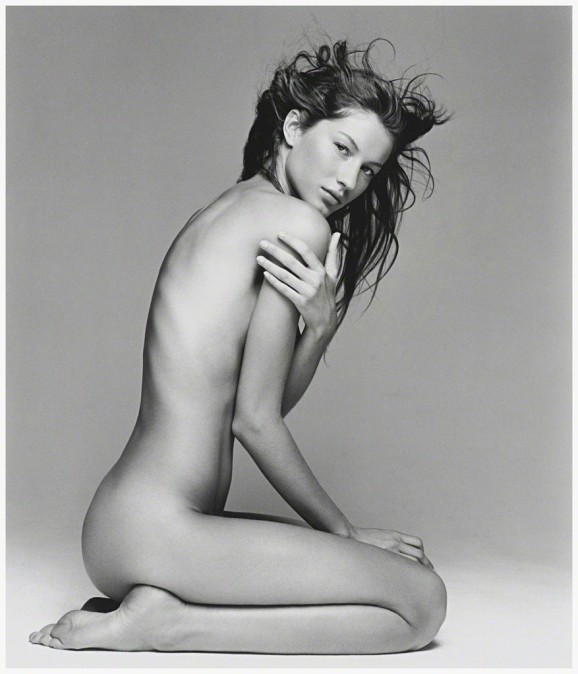
Another aspect worth mentioning is the way in which fashion photography, especially since the 80s and 90s, was greatly influenced by the aesthetics of pornography. Feminist scholar and historian Sheila Jeffreys wrote about this relationship in her book “Beauty and Misogyny“, which contains a whole chapter about the “pornochic” phenomenon. The writer describes how, as pornography and prostitution became mainstream industries during the late 20th century, certain practices that were before only seen in pornographic images became present in advertising and in the fashion industry, creating new expectations and beauty standards for women. Jeffreys comments specifically on the way these industries use nudity in their visual language.
“One way in which fashion advertising is following pornography is that
nakedness is becoming de rigeur. Breasts are now routinely exposed, either
completely or behind filmy drapery that is entirely seethrough. The
designers and photographers use nakedness precisely to get media attention.
It is unlikely that the revealing clothes will find much of a market
among women but that does not matter in a time when fashion labels are so
desperate for custom that any attention which might boost their perfume
and handbag lines is worth having. One such fashion photo covering one
quarter of the back page of The Age newspaper in Melbourne showed a
woman wearing only part sleeves and a low-slung skirt in a non-seethrough
fabric. The model was otherwise naked except for an apron of transparent
cloth covering her upper body. The commentary under the picture runs, ‘A
model shows off an outfit by New Designer Toni Maticevski at the
Melbourne Fashion Festival yesterday. Maticevski’s feminine collection
features unorthodox cutting and draping, pleating and asymmetric hemlines’
(Express, 2002). It is not the hemlines that lead to the photo being
included and women are unlikely to race to buy the apron.”
Among many things, pornography has influenced aesthetic trends such as heavy makeup, complete removal of pubic hair, extremely high heels (Jeffreys has a chapter in her book dedicated entirely to high heels and the male fetish of making women unable to run or walk properly), and even more damaging practices like silicone breast implants, surgery to remove parts of the vulva, like the labia or clitoral hood, and has also set a standard of extreme thinness.
It is possible to see the influence of pornography-filtered-through-fashion in the Facebook Dude’s project. Besides the clean shaven vulvas on the models, as well as their hairless legs and armpits, many of the poses are markedly artificial and uncomfortable, with twisted spines to better frame breasts and buttocks. Some of the photography had a more disturbing tone. One young woman was photographed lying in bed, hugging a pillow between her legs and shielding herself with her hands in a defensive position. Another had her face covered with a piece of seethrough cloth that was jammed inside her mouth, hiding her face and transforming her into a nondescript hole.
It is also important to point out that none of the elements that compose those images is problematic by itself. Black-and-white photography can be used to create powerful images, removing color as an element of distraction and focusing solely on the shapes, light and contrast. I’m particulary fond of black-and-white architecture photography, which, in it’s best instances, has the power to find beauty in otherwise unremarkable urban elements that we completely ignore on a daily basis. And soft lighting can be used to give an ethereal feeling to photos, and works particulary well when shooting small objects and natural elements like plants and insects.
In the same manner, female nudity can be used in photography as a way to break from the tradition of picturing women as sights/objects to be seen, and even more importantly, breaking from the historical tradition that brings us from the Venus to the pornochic fashion editorial. One example that I like a lot are some of the images from ESPN The Magazine Body Issue, that shows pictures of nude athletes of both sexes. While some of the photos of female athletes have a more eroticized composition, plenty of them are photographed in dynamic poses, showing off their powerful musculature and emphasizing their strength and athletic potency, alluding to the ancient Greek statues of athletes and warriors.
Let’s then go back to the way the Facebook Dude explained his art project:
“Just correcting you, they’re not just “female nudes”, they’re photos of human beings, taken with the utmost respect, showing them in an organic manner. To combat the use of the female body by sexist society, by men or something related to men, we must combat it with the body, in a way that this transgression removes it’s eroticization. Each women I photograph has full free speech, being it in her body or in her voice. I’m just the bearer.”
Throughout this post we could see that yes, his photos are female nudes, confirmed from an historical analysis. No, they are not made with respect, since the style and aesthetic choices come from a tradition of using women’s bodies as decorative objects, made by and for men. Based on this, we can also affirm that there’s absolutely nothing transgressive about this project. Afterall, it is essentialy an heir of a millenia-old European artistic line, and as for de-eroticizing it, we also analyzed the pornographic influences in the composition of the work.
So, just correcting you, Facebook Dude, everything you said is bullshit.
As as for being “just the bearer”, that’s a very nice way to evade responsibility for the manner in which you chose to portray these women. Because yes, you can try using this tired, old neoliberal choosey-choice discourse and free speech, but even if the women themselves chose their poses, you chose the framing, you chose the lighting, you chose the background, you chose to photograph these models, women several decades younger than you, naked, because you wanted to see them naked. And you decided to put the pictures on Instagram attached with their full names, without even thinking about how a potential employer can Google their names during a job interview process and find their nude pictures. And it’s you who’s gaining fame and participating in gallery shows with this project of yours.
So explain to me, Facebook Dude, how does your project benefit women? Why aren’t you using your experience and your network of professional contacts to create opportunities for female photographers, instead of using women’s bodies to improve your own career? Are you donating any money or resources to shelters or other services that help women in domestic violence situations? Your models are telling stories of abuse and deep trauma, which is the reason why you wanted to photograph them in the first place. Are you helping these women get any kind of real mental healthcare, or are you just exploiting their vulnerability to further your own agenda?
And talking about respect, do you really think the way you talked to me was respectful? Do you really think exchanging three sentences with a complete stranger and then asking photograph her naked ass right away is respectful behavior?
You are a flesh collector, Facebook Dude. You saw a text written by a woman who sparked your curiosity and your first reaction was the desire to add this woman, naked and vulnerable, to your personal collection. You did not show the slightest disposition to interact with me as an intellectual peer, or in discussing my ideas. You, before even talking to me as a human being, already imagined me in the nude. You, like any average, unremarkable male, get your kicks off of seeing a distressed woman.
You are merely one among thousands of male photographers who feel entitled to undressing and exposing women in the name of an empty, selfish “art”. Your type, the creepy photographer who collects black-and-white female nudes, is so incredibly common that it’s frequently represented in movies, TV shows, books and even videogames.
You are just another common, mediocre pseudoartist, repeating what other men did centuries before you, incapable of real transgression or even of self-reflection.
The truth is that the only reason that I, specifically, got your attention is because you don’t have any woman like me in your collection. I’m a novelty. More than that, I’m a challenge. You read my text where I proudly and openly declared that I belong to no man and that I reject the male worldview, and that bothered you. You wanted to see me naked and vulnerable in your bed to prove me wrong. Like a big game hunter in a safari, you wanted to catch the most exotic beast, the wildest and hardest to tame, and add her to your trophy collection.
And when you received a “no”, you felt the need to justify yourself. Because, deep inside, you don’t even believe in your own excuses.
At the end of the day, my only wish is that soon we will all be Artemis, Hecate, Medusa, and that no woman will ever again agree to undress to be your Venus.
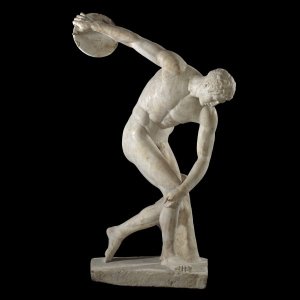
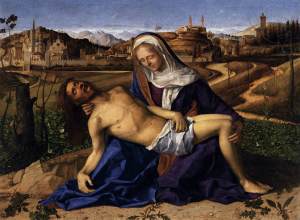
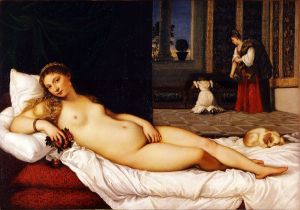
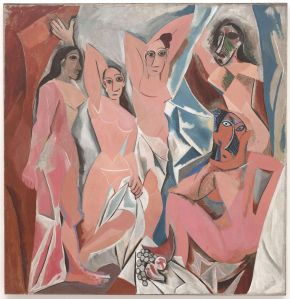
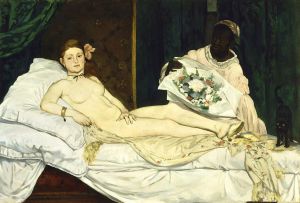
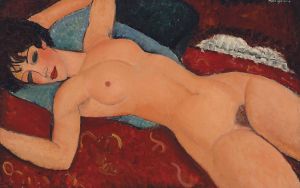
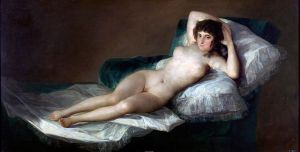
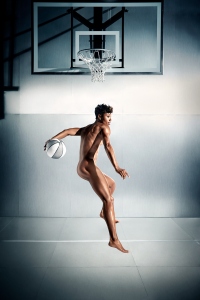
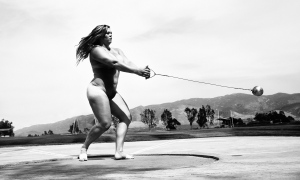
This is really fantastic!
LikeLike
aaaaaaaaaaaaaaaaaaaaaaa so good
LikeLike
I fucking love you
LikeLike
OMG! I feel icked out when I come across these “empowering” naked art projects men seem to think are so creative. I don’t like them but I have a hard time figuring out why. Thank you for all the depth and history and clarity.
LikeLike
Amazing response !
We need more independent woman. Woman that can see thru lies and illusion.
LikeLike